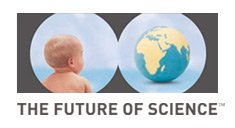Nora Savage

Nora Savage obtained her bachelors degree in Chemical Engineering in 1992 from Prairie View A&M University, in Prairie View, Texas. She received two Masters Degrees (in Environmental Engineering and Environmental Science) from the University of Wisconsin-Madison, in Madison, Wisconsin in1995, and a doctoral degree in Environmental Science from the same institution in 2000. She was employed by the Wisconsin Department of Natural Resources in the Air Monitoring Division while attending graduate school. In addition, she worked as a mentor/counselor for both high school and undergraduate students through involvement in various educational programs at UW-Madison, including serving as a Counselor for the Ronald
E. McNair Scholars Program. Upon completion of her doctorate, she obtained a one-year post- doctoral research associate position at Howard University, in Washington DC, where she taught a senior-level Civil Engineering class and worked on various educational initiatives in the graduate school.
Her current position is that of environmental engineer at the Environmental Protection Agency (EPA) in Washington, DC in the Office of Research and Development (ORD). Her focus areas include nanotechnology, pollution prevention, and life cycle approaches for emerging technologies. She was instrumental in the development of the Office of Research and Development Nanomaterial Research Strategy (NRS) published in 2009.
She is currently the Nano Team Lead for the National Center for Environmental Research within ORD. As Team Lead she manages the Science To Achieve results (STAR) extramural grant program in nanotechnology.
Nora is one of the Agency representatives on the Nanoscale Science, Engineering and Technology (NSET) subcommittee of the National Science and Technology Council that implements the activities and strategies of the National Nanotechnology Initiative (NNI) and has served in this role since 2001. Recently she served as Co-Chair of the NNI’s Strategic Plan Task Force, the inter-agency work group that developed the 2011 NNI Strategic Plan.
Nora has authored and co-authored numerous articles on nanotechnology in leading journals, including the Journal of Nanoparticle Research and Toxicological Sciences. She was lead editor for the book “Nanotechnology for Water Applications” and has contributed chapters to several other books, including the Oxford Handbook of Nanoscience and Technology, vol. III.
Nora is currently the Vice Chair of the Gordon research Conference on Environmental Nanotechnology. The first meeting for this GRC series will take place in May 2011 with subsequent meetings occurring every two years. She will serve as Chair of this GRC in 2013 and hopes to extend the scientific knowledge, identify critical opportunities and challenges, increase national and international collaborative efforts, and nurture an environmental consciousness in this field.
Nora is an invited lecturer at numerous conferences and meetings both in the U.S. and abroad. She also is active in a variety of scientific and professional organizations.
Versione italiana
Nora Savage si è laureata in ingegneria chimica nel 1992 presso la Prairie View A&M University situata a Prairie View, in Texas. Nel 1995 ha conseguito due Master’s Degree (in ingegneria ambientale e scienze ambientali) presso la University of Wisconsin-Madison a Madison, nel Wisconsin, e nel 2000 un dottorato in scienze ambientali presso la stessa università. Durante gli studi di dottorato è stata assunta dall’Air Monitoring Division del Wisconsin Department of Natural Resources. Ha partecipato inoltre ad attività di orientamento e tutoraggio per studenti liceali e universitari, contribuendo a vari programmi educativi alla University of Wisconsin-Madison, fra cui il Ronald E. McNair Scholars Program. Dopo il conseguimento del dottorato ha ottenuto un posto annuale di ricercatore associato alla Howard University di Washington DC, dove ha tenuto un corso avanzato di ingegneria civile e si è occupata di varie iniziative educative per dottorandi.
È attualmente ingegnere ambientale all’Environmental Protection Agency situata a Washington DC nell’Office of Research and Development. Si occupa principalmente di nanotecnologie, prevenzione dell’inquinamento e analisi del ciclo di vita per le tecnologie emergenti. Ha svolto un ruolo cruciale nello sviluppo della Nanomaterial Research Strategy pubblicata nel 2009 dall’Office of Research and Development.
È attualmente direttrice del Nano Team del National Center for Environmental Research nell’ambito dell’Office of Research and Development; le sue incombenze comprendono la gestione del progetto esterno di nanotecnologie «Science To Achieve Results» (STAR).
Dal 2001 Nora Savage è una dei rappresentanti dell’Environmental Protection Agency nel sottocomitato Science, Engineering and Technology del National Science and Technology Council che mette in atto le attività e le strategie della National Nanotechnology Initiative (NNI). Di recente è stata codirettrice della Strategic Plan Task Force del NNI, il gruppo di lavoro inter- agenzia che ha sviluppato l’NNI Strategic Plan del 2011 (http://www.nano.gov/nnistrategicplan211.pdf).
Nora Savage è autrice e coautrice di numerosi articoli di nanotecnologie in riviste di punta, tra cui il Journal of Nanoparticle Research e Toxicological Sciences. È stata caporedattrice del libro
«Nanotechnology for Water Applications» e ha scritto capitoli per vari altri libri, fra cui il terzo volume dell’Oxford Handbook of Nanoscience and Technology.
Nora Savage è attualmente Vice Chair della Gordon research Conference on Environmental Nanotechnology. Il primo incontro si è tenuto nel maggio 2011 e i seguenti avranno cadenza biennale. Nora Savage presiederà l’incontro del 2013 nella speranza di ampliare le conoscenze scientifiche, identificare le opportunità e gli ostacoli principali, rafforzare le collaborazioni nazionali e internazionali e stimolare la formazione di una coscienza ambientale nel campo.
Nora Savage tiene regolarmente seminari invitati a varie conferenze e incontri sia negli Stati Uniti che all’estero; è attiva in numerose organizzazioni scientifiche e professionali.
The future challenges and opportunities in nanoscience for the environment
The advances in chemistry, material science, physics and the various engineering disciplines are igniting the field of nanoscience. The combinatorial nature of nanoscience with the confluence of scientists from every conceivable community including academia, government, industry, and the media, has generated lively debates and yielded both excitement and foreboding.
These reactions are vigorously expressed when the natural environment and nanoscience are the focus. Nanoscience offers tremendous opportunities for improving environmental assessment and protection. These include: the capacity to intelligently and accurately interrogate complex mixtures residing in environmental media; the ability for “smart” sensing devices which can also perform specified actions resulting in the elimination of exposure to contaminants; the ability to design and manufacture desired compounds and materials without generating wastes; the ability to remediate contaminants located in deep subsurface or other places difficult to access using traditional remediation techniques; and the ability to design nanomaterials which can degrade or disassemble into useful secondary materials.
In order to fully realize these and other not yet conceived opportunities and to avoid the pitfalls of creating major deleterious environmental impacts a holistic paradigm is needed. The concerted effort of all stakeholders is crucial for its successful creation and use. This paradigm should incorporate considerations of quality of life improvements across social sectors and cultures, equity and parity issues, economic needs, resource constraints, and energy demands and sources. This presentation will look to the horizon of nanoscience providing a glimpse of future environmental opportunities and offering benign design as a path forward wherein challenges can be met and resolutions devised.
Versione italiana
I progressi nella chimica, nella scienza dei materiali, in fisica e in varie discipline ingegneristiche stanno mettendo le ali al campo delle nanoscienze. La natura interdisciplinare delle nanoscienze, che riuniscono scienziati di tutte le comunità possibili, fra cui l’università, il governo, l’industria e i mezzi di comunicazione, ha generato dibattiti vivaci e suscitato sia entusiasmo che preoccupazione. Reazioni del genere si esprimono con particolare forza quando si parla di ambiente e nanoscienze. Queste ultime offrono straordinarie opportunità di progresso nella valutazione e nella protezione dell’ambiente, fra cui: esaminare misture complesse presenti nell’ambiente in maniera intelligente e accurata; costruire sensori «intelligenti» capaci anche di svolgere determinate operazioni evitandoci l’esposizione ad agenti contaminanti; progettare e costruire i componenti e i materiali necessari senza produrre rifiuti; eliminare gli agenti contaminanti situati in profondità o comunque difficilmente accessibili con tecniche di risanamento tradizionali, e progettare nanomateriali che nella degradazione o nella decomposizione danno luogo a materiali secondari utili.
Per realizzare appieno queste opportunità e altre ancora da concepire, ed evitare gravi danni all’ambiente, occorre un paradigma olistico; per poterlo creare e sfruttare utilmente è cruciale un coordinamento degli sforzi di tutte le parti interessate. Un tale paradigma dovrebbe includere l’attenzione a vari ambiti: miglioramento della qualità della vita in tutte le culture e le classi sociali, questioni di eguaglianza e parità, necessità economiche, limiti alle risorse, fabbisogno e risorse energetiche. Il seminario guarderà al futuro delle nanoscienze, citando le future opportunità ambientali e riconoscendo nell’ingegneria ecocompatibile la strada che permette di affrontare gli ostacoli ed escogitare soluzioni possibili.





